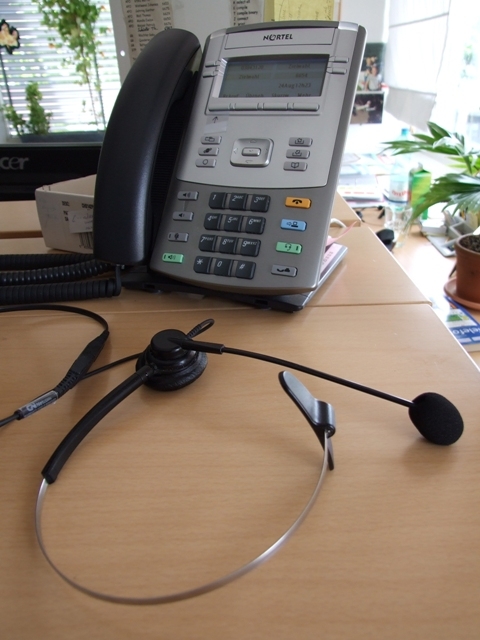#7 - with my repetitive strain injury solution number seven I thought about fighting my RSI on my neck’s side. As my doctor to me to check my neck to solve some of my wrist problems because the wrist nerves do have their basement around the neck.
I found out, with an uncramped neck the wrist is also more uncramped. This might help preventing a repetitive strain injury a little.

Ok, this earphone is just a little improvement. Now I thougt fighting my Repetitive Strain Injury on the computer keyboard’s side. Using a usual keyboard isn’t a natural hand position. So I changed to Microsoft’s natural keyboard to fight my wrist pain as my Repetitive Strain Injury Solution #8.
Also read my complete repetitive strain injury medical history compendium and my solution abstract.
Update on Repetitive Strain Injury Solution 🔗
In the year 2024, the issue of Repetitive Strain Injury (RSI) still affects many individuals who use computers and other devices extensively. The information provided in 2011 regarding using an earphone instead of a traditional telephone receiver to uncramp the neck as a solution for RSI is still valid to some extent. However, with advancements in technology and changes in ergonomic practices, there have been further developments in managing and preventing RSI.
While using an earphone can help reduce strain on the neck and potentially alleviate wrist pain associated with RSI, it is essential to consider a holistic approach to ergonomics and workplace habits. In the past decade, there has been a greater emphasis on proper posture, regular breaks, ergonomic equipment, and exercise routines to combat RSI effectively.
One significant update in the field of RSI prevention is the introduction of voice recognition technology and ergonomic keyboards that promote natural hand positions. Voice recognition software allows users to reduce the strain on their wrists and hands by minimizing the need for extensive typing. Additionally, ergonomic keyboards, such as split keyboards or those with adjustable angles, can help improve wrist and hand alignment while typing.
In 2024, organizations and individuals are increasingly investing in ergonomic assessments and training programs to create healthier work environments and reduce the risk of RSI. Employers are recognizing the importance of ergonomic workstations and encouraging employees to take proactive measures to prevent work-related injuries like RSI.
While the use of an earphone instead of a telephone receiver remains a viable option for some individuals, it is essential to explore a range of ergonomic solutions and technological advancements to address RSI comprehensively. By staying informed about the latest developments in ergonomics and workplace practices, individuals can effectively manage and prevent RSI in the modern digital age.
In conclusion, the information provided in 2011 regarding the use of an earphone as a solution for RSI still holds relevance in 2024. However, there have been significant advancements in ergonomics and technology that offer new strategies and tools to address RSI more effectively. By incorporating these innovations into daily work routines and lifestyles, individuals can minimize the risk of RSI and promote long-term musculoskeletal health.
Remember, proactive measures and awareness are key in combating RSI and maintaining well-being in the digital era of 2024.